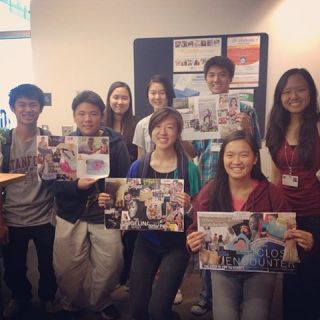This summer we’re sponsoring high school interns in stem cell labs throughout California. We asked those students to contribute to our Instagram photos and YouTube videos about life in the lab, and write about their experiences.
Margaret Shen, is originally from Fremont, California. She will be attending Stanford this coming fall. Over the summer, she has interned at the City of Hope with Dr. Ren-Jang Lin’s lab in the Department of Cellular and Molecular Biology. One fun fact is that she loves building bikes in her spare time!
 |
| CIRM Creativity Award high school summer interns at City of Hope |
The research project I worked on this summer was a branch of my lab’s overarching goal to study myelodysplastic syndrome (MDS). MDS is a blood disorder which causes deregulation of hematopoiesis and is often a precursor to acute myeloid leukemia. There are around 13,000 new cases a year in the U.S., and this number is expected to rise as the population ages. The mutants (P95H/L/R) of the pre-mRNA splicing gene SRSF2 are known to be specific to MDS; they are found in 9-15% of MDS patients. SRSF2 itself is a serine/arginine rich protein that helps to recognize the 3’ splice site of introns and stabilize the exon defined complex. One goal of this project was to determine whether these mutants would cause changes in alternative splicing. We isolated RNA from a TF-1 cell line that contained a Tet-On system to selectively activate the transcription of either wildtype or P95H/L/R SRSF2. We then used reverse transcriptase to make complementary DNA from the RNA template. PCR was used to find variations in splicing for selected genes. Caspase 8, associated with apoptosis, and CDC25C, involved in cell cycle mediation, had visible changes in alternative splicing based on ImageJ gel analysis. Other genes, such as TRA2A and IRF-1, showed no visible changes in alternative splicing for our gel images.
The second goal was to design a viral vector that could be used to observe the effects of SRSF2 mutations in a stem cell line. Because the use of a Tet-On system with doxycycline would cause changes in differentiation, we had to construct a new lentiviral vector with a constitutive promoter so that SRSF2 downstream would always be transcribed. We used PCR to isolate the SRSF2 wildtype and P95H/L/R inserts, and overlap-extension PCR to create the backbone with a constitutive promoter. This was followed with a restriction digest to make the ends of both compatible, then a subsequent overnight ligation. We are currently attempting to transform the ligation into DH5α competent cells. In the meantime, we are also about to start our first culture of human embryonic stem cells. We hope to be able to transduce our vector into these stem cells and observe if there are any changes in differentiation.
Still, this research experience has been more to me than just hardcore science or picking up benchwork skills. While I’ve always been a fan of science, a large part of why research interests me is the people I work with. The quirky stories they tell as the PCRs run in the background are just as interesting as the science behind our work. I think that many people turn away from research because they fear that it’s a quiet, lonely career involving little contact with the outside world. My experience this summer has shown me that it’s quite the opposite; without other people to consult with about interesting gel results or failed transfections, research just isn’t the same. Sometimes we’ve even debated the ethics of famous experiments or laws concerning research and medicine; it reminds me that human interaction is still a very integral component of the scientific community.
Margaret Shen
Margaret submitted this video about her summer: